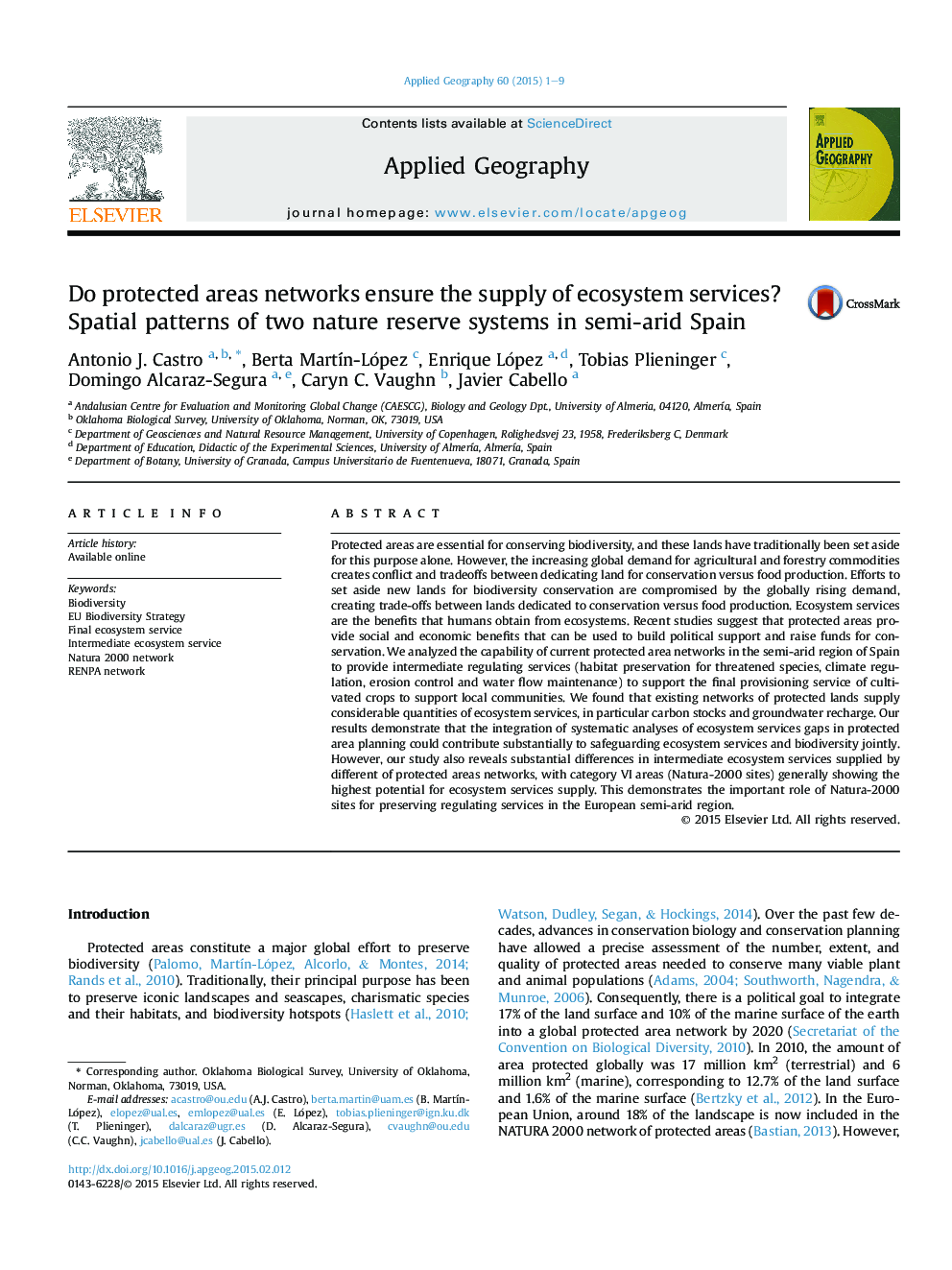| Article ID | Journal | Published Year | Pages | File Type |
|---|---|---|---|---|
| 6538550 | Applied Geography | 2015 | 9 Pages |
Abstract
Protected areas are essential for conserving biodiversity, and these lands have traditionally been set aside for this purpose alone. However, the increasing global demand for agricultural and forestry commodities creates conflict and tradeoffs between dedicating land for conservation versus food production. Efforts to set aside new lands for biodiversity conservation are compromised by the globally rising demand, creating trade-offs between lands dedicated to conservation versus food production. Ecosystem services are the benefits that humans obtain from ecosystems. Recent studies suggest that protected areas provide social and economic benefits that can be used to build political support and raise funds for conservation. We analyzed the capability of current protected area networks in the semi-arid region of Spain to provide intermediate regulating services (habitat preservation for threatened species, climate regulation, erosion control and water flow maintenance) to support the final provisioning service of cultivated crops to support local communities. We found that existing networks of protected lands supply considerable quantities of ecosystem services, in particular carbon stocks and groundwater recharge. Our results demonstrate that the integration of systematic analyses of ecosystem services gaps in protected area planning could contribute substantially to safeguarding ecosystem services and biodiversity jointly. However, our study also reveals substantial differences in intermediate ecosystem services supplied by different of protected areas networks, with category VI areas (Natura-2000 sites) generally showing the highest potential for ecosystem services supply. This demonstrates the important role of Natura-2000 sites for preserving regulating services in the European semi-arid region.
Keywords
Related Topics
Life Sciences
Agricultural and Biological Sciences
Forestry
Authors
Antonio J. Castro, Berta MartÃn-López, Enrique López, Tobias Plieninger, Domingo Alcaraz-Segura, Caryn C. Vaughn, Javier Cabello,
